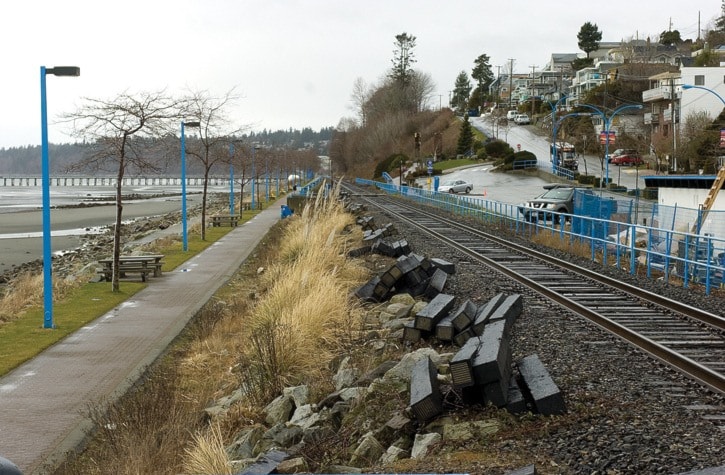Editor:
For quite some time, I noticed the detrimental conditions of the decades-old sleepers on the BSNF tracks along the promenade. The welded tracks, laid down some five years ago, delayed increased damage to the roadbed for a short time.
In October last year, I raised the issue at a City of White Rock meeting, pointing out that dozens of ties were cracked, spikes were missing, on some spots the ballast was washed away and that, simply, the line does not meet Department of Transport standards.
It’s only a matter of time when we experience a serious accident or disaster.
My suggestion – to ask council to have the tracks inspected immediately – was rejected by the chairman and the council representative of the committee, stating we do “not have the experience.”
It was noted that a citizen could make such a request.
Obviously my 40 years national and international experience in transportation on three continents does not count in White Rock, not to mention that anybody walking along the promenade with his or her eyes open should have noticed the problem. My idea was to inform the experts of the city engineering department that most European countries have banned the use of creosote-treated wood since the early ’90s, and make sure that the entire section in Canada be replaced with concrete ties used worldwide, except the U.S. and here. But then, where in these two countries has a railroad been built in the past 100 years?
I will follow up with Environment Canada and their regulations on the use of creosote. Will be interesting!
Wolfgang Schmitz, White Rock
• • •
It’s nice to know the train in White Rock is used for more than just importing and exporting items, such as chemicals or other needs. However, the railway that runs along our beach is a safety hazard.
Why? Well, first of all, the ground around the tracks is certainly not as stable as it was when it was first built. Many trains go through there on a regular basis. They are heavy and shake, causing the ground to shake and become loose. It’s like a mini-earthquake, you could say.
So, leading to my second point, what is the city and province going to do if one day the ground gives away and the tracks slide? What about if there was a train going through when that happened? Many people could be killed and many chemicals or other things will be put into our ocean that may not be able to be removed.
Our water will be polluted, leaving beautiful White Rock without water. I don’t know how many people have taken the time to think about this, but I know I sure do every time I go to the beach.
C. Furlong, Surrey
Look at the positive
Re: Fuming over creosote use, March 25 letters.
I am always amazed about the people that offer objection to any project that in their mind will damage the environment, but never are able to roll up their sleeves and come with a well-though-out alternative.
Rise to the reality and don’t always depend on others to do the work for you. Look at the positive side also; “it creates jobs.” Based on the environmental views, we would have more homeless. Have nice day.
Suan H. Booiman, White Rock
